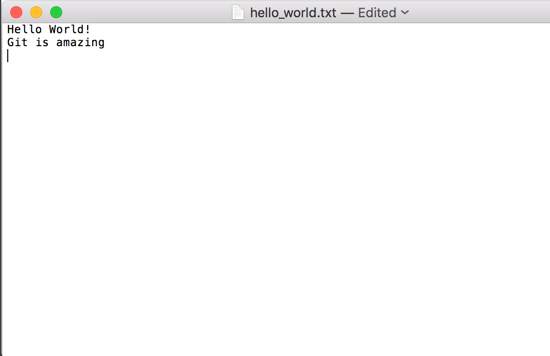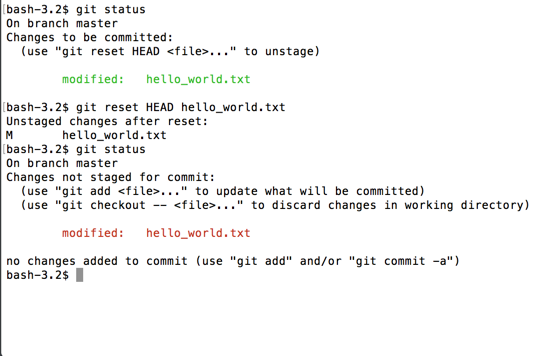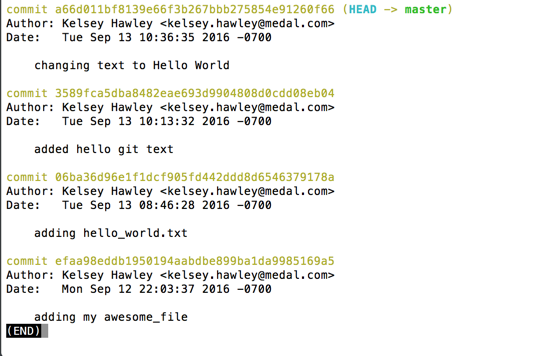git reset
git reset is used to reset the current HEAD to a specified state. It has many different uses.
Unstage
It can be used to unstage some changes.
For example, let's edit our hello_world.txt. Let's add a line that says "Git is amazing".

And lets add it, but not commit it. Then let's look at our git status.
$ git add hello_world.txt
$ git status

Remember that git add puts the changes into a staging area. The staging area has the changes we are ready to commit.
If we changed our mind, and no longer wanted to commit that text change, we can use git reset HEAD <file> to take it out of the staging area, and put it back into the working directory.
If you look at the git status more closely, you'll even see this as a recommended option for unstaging.

Let's run that command and then git status.
$ git reset HEAD hello_world.txt
$ git status

git reset HEAD <file> takes the specified file, and resets that file in the staging area to the state it was at the HEAD or most recent commit. In short terms, it removes that file's changes from the staging area, but keeps them in your working directory.
Lets remove that text "Git is amazing" text from hello_world.txt in the text editor so that our git status is empty again.

Rollback
Remember that another_awesome_file commit we made? We really didn't need that, so lets get rid of it and roll it back.
git reset <hash> will rollback your history to that commit, essentially removing any commits that came after it in your history. Note: your changes will still exist in your directory, but the commits that made them will be gone.
For example, grab the commit hash where we changed Hello Git to Hello World
$ git reset a66d011bf8139e66f3b267bbb275854e91260f66
$ git status

If you look at the status, you'll see that another_awesome_file is in our untracked files.
If we look at the log, we'll see that the commit is gone too and the HEAD is now pointing to the commit we reset to.
$ git log --decorate

Since we don't want another_awesome_file anymore, lets delete it. It will also disappear from our untracked files in git status.
$ rm another_awesome_file
$ git status

Another Alias
We've learned that HEAD is a pointer to the most recent commit. Another type of shortcut builds on HEAD to point to the previous commit. HEAD^ points to the commit before HEAD and HEAD^^ points to 2 commits before HEAD. You can keep adding ^ to HEAD to point even further back. However, I recommend using the actual hash for commits more than one or two behind HEAD.

We could have HEAD^ in our previous rollback example, shortening git reset a66d011bf8139e66f3b267bbb275854e91260f66 to git reset HEAD^